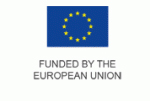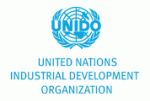ground-nut-profile
November 6, 2021
NIGERIA GROUNDNUT FACTS
Production
- Nigeria’s groundnut since 1912
- 3rd largest in the World with 10% of global production.
- Number 1 producer in Africa with 39% total Production
- 19 Producing States.
- Smallholders and commercial farmers.
- Yields 1.37 tons/ha.
- Improving quality
- Improved varieties
- Planting period is January- February and May – July
Trends
- A lot of government emphasis on improved production
- Growth forecast to continue.
- Improved varieties
- Rich in protein Contains 25% protein
Markets
- Europe demand for Groundnut is high
- Groundnut processing is on the increase
- Markets with high export potential of for Nigeria’s groundnut are Europe and Asia
Click here to download a comprehensive product Profile for Groundnut
- MARKET
With the improved quality of its groundnuts and processing facilities, Nigeria could once again become a major exporter in the global market, as the world’s 3rd biggest groundnut producer.
The Nigerian export markets are highly concentrated. This market concentration makes the market for Nigerian groundnuts very volatile, as the price of groundnut exports highly depends on demand in those few markets.
(Source: https://comtrade.un.org/data/)
There is an opportunity for Nigeria to increase its export value and groundnut market share. To make sure that happens the quality of the raw material and the development of processing plants must be improved
- ACCESS TO MARKETS
In the long term, the European market for groundnuts is expected to show stable growth. Above-average growth is expected for in-shell groundnuts and dry-roasted groundnuts. This growth is likely to be driven by changes in the consumption patterns of consumers, including rising demand for healthier snacking options and a decrease in consumption of oily nut. Europe offers opportunities for developing country suppliers, Like Nigeria.
Europe is by far the largest importing region for groundnuts in the world, accounting for around one-third of the total world trade. World imports of groundnuts have increased by an average of 22.7.% in value in the period 2019-2020 (source: ITC Trademap). More than 80% of all imports from outside Europe and the world come from developing countries. In the next five years, the European market for groundnuts is likely to increase with an annual growth rate of 3-5%. Regular fluctuations in imports will continue to be influenced by harvested crop volumes and price fluctuations rather than changes in demand.
The Leading groundnut importers in the world in 2020 are, China, Netherlands, Indonesia, Germany United Kingdom and Vietnam. (source:UN-COMTRADE)
- MARKET REQUIREMENTS
There are some key Market requirements for prospective exporters when dealing with buyers in export markets
Contaminant control in groundnuts
The European Commission Regulation sets maximum levels for certain contaminants in food products. This regulation is frequently updated and, apart from the limits set for general foodstuffs, a number of specific limits apply for contaminants in specific products including groundnuts. The most common requirements regarding contaminants in groundnuts relate to the presence of mycotoxins, pesticide residues, microorganisms, and heavy metals.
Border control
Groundnuts from Africa have been inspected with increasing frequency over the last several years. As the levels of aflatoxin in groundnuts imported from those two countries have not decreased, the European Commission issued the special regulation , which entered into force in June 2019.
According to this regulation, most Consignments of groundnuts from Africa must be accompanied by a health certificate and laboratory testing results. In addition, 50% of all imported groundnuts are physically checked on importation.
Mycotoxins
The presence of mycotoxins (aflatoxins, in particular) is the main reason why groundnuts may be banned on the European market. In 2018, the Rapid Alert System for Food and Feed (RASFF) recorded 181 border rejections of groundnuts due to the aflatoxin content. The highest percentage of those rejections (30%) applied to groundnuts imported from Argentina, followed by China (19%), Egypt (18%) and the United States (7%). The level of aflatoxin B1 in groundnuts intended for direct human consumption must not exceed 2 PPB/kg and the total aflatoxin content (B1, B2, G1 and G2) must not exceed 4 PPB/kg. However, higher aflatoxin content for groundnuts is allowed if the products are not intended for direct human consumption. In such cases, the groundnuts must be sorted or treated before they are placed on the market.
Pesticide Residues
The European Union has set maximum residue levels (MRLs) for pesticides found in and on food products. Products containing a higher concentration of pesticide residues than allowed are withdrawn from the European market. However, it is fairly uncommon to encounter excessive levels of pesticide residues in the groundnut trade. This is because the shell, in which residues may accumulate, is usually removed before consumption.
The European Union regularly publishes a list of pesticides, which are approved for. This list is updated frequently. In 2019, the European Commission adopted 12 new laws prescribing changes with respect to nearly 80 different pesticides.
Microbiological contaminants
The presence of very low levels of salmonella and E. coli in ready-to-eat or processed foods, including groundnuts, is an important cause of foodborne illness. Groundnut processors should consider salmonella and E. coli as major public health risks in their hazard analysis of critical control points (HACCP).
Quality Requirements
The quality of groundnuts is determined by the percentage of defective product by weight. For in-shell groundnuts, defects can include empty pods, damaged pods and discoloured pods. For groundnut kernels, defects can include damaged kernels, discoloured kernels and broken or split kernels. The industry has defined several other quality criteria, but some of them, such as taste and flavour, are subjective and cannot easily be determined on the basis of physical characteristics. Specific groundnut quality requirements are established in several standards. The most widely applied standard in Europe is the standard established by the United Nations Economic Commission for Europe (UNECE) which is based on the United States standards. The most important criteria used to define the quality of groundnuts are as follows:
- Grading
The most used grading classification comes from the United States. Under this, grades are defined by the number of groundnuts counted in one ounce (e.g. 38/42 or 40/50). The size is added to the name of the groundnut type or variety (e.g. super jumbo Virginia in shell 9/11). However, grading classifications originating from other producing countries may be used, as well.
- Food safety certification
Although food safety certification is not obligatory under EU legislation, it has become a must for almost all food importers. Most established importers would not work with you if you cannot provide some type of food safety certification.
The majority of buyers will ask for certification recognized by the Global Food Safety Initiative (GFSI). For groundnuts the most popular certification programmes, all of which are recognized by GFSI, are:
- International Featured Standards (IFS)
- British Retail Consortium Global Standards (BRCGS)
- Food Safety System Certification (FSSC 22000)
- Hazard Analysis of Critical Control Points (HACCP)
Although different food safety certification systems are based on similar principles, some buyers may prefer one management system, in particular. For example, British buyers often require BRC, while IFS is more common for German retailers. It should be noted that food safety certification is only a basis from which to start exporting to the international market. Serious buyers will usually visit/audit your production facilities before doing business with you.
- Packaging Requirements
The most common types of export packaging are vacuum bags in cartons in the case of kernels and jute bags in the case of in-shell groundnuts. Other materials include tinplate containers or paper boxes. The size of the packaging for the export of bulk groundnuts is different. In many cases, bulk groundnuts are exported in quantities of 25 kg, but large bags weighing 1 to 1.5 tonnes are often used, as well. Retail packaging is very different, but it is not very often used in imports from the main export origins
- Labeling Requirements
The type of groundnuts and the name of the product must appear on the label, and either “groundnuts” or “groundnuts in-shell”. It is common for labels on export packaging to include the crop year, as well. Information about bulk packaging has to be indicated either on the packaging or in accompanying documents. Bulk package labeling must include the following information:
- Name of the product
- Lot identification number
- Name and address of the manufacturer, packer, distributor or importer
- Storage instructions — storage and transport instructions are very important due to the high oil content and sensitivity to high levels of moisture, which can negatively influence quality if not dealt with properly.
The lot identification number and the name and address of the manufacturer, packer, distributor or importer may be replaced by an identification mark.
In the case of retail packaging, product labeling must be in compliance with the European Union Regulation on the provision of food information to consumers. This regulation specifies requirements for nutrition labeling, origin labeling, allergen labeling and clear legibility (minimum font size for mandatory information). Please note that this regulation lists groundnuts as a product, which can cause allergies or intolerances, and therefore allergen information must be clearly visible on the retail packaging.
- Finding Buyers
- Segments
The largest user of groundnuts in Europe and the world is the snack segment. Approximately 60-70% of imported groundnuts kernels are sold as snacks, predominantly as roasted salty snacks. Groundnut kernels are also increasingly used by food processing industries as ingredients.
- Snack segment
Within the snack segment, a few trends are influencing consumption. One is the development of different roasting flavours in order to diversify the offering, and match it with different taste preferences. Aside from roasting flavours, different types of salty and sweet coatings are used to produce types of salty and sweet coatings are used to produce innovative snacks. Another trend is the increasing range of unsalted, dry-roasted (including in-shell nuts) and unroasted groundnuts as a healthier alternative to salted snacks.
- Food processing segment
The food-processing segment uses significant quantities of groundnuts. It is expected that this food-processing segment will gain market share over the next several years. A variety of important product launches and developments are already described in the trends chapter of this study. The most common groundnut ingredient users include the following:
- The confectionary industrymainly uses groundnuts in chocolate snacks. One of the leading chocolate snack brands containing groundnut is Snickers (by Mars), but there are many other similar products in Europe, often produced under private labels for retail chains.
- The bakery industryuses groundnut pieces as spreads in cakes, cookies and pastries.
- Groundnut butteris often imported but is also increasingly being produced in many European countries. The Netherlands is the largest processor of groundnuts and largest producer of groundnut butter in Europe.
- Protein and fruit-nut barsare increasingly offered as an alternative to sugary and chocolate snacks. Groundnuts are often used as an ingredient in those products as a vegetable source of protein.
- Other segments – Groundnuts are also used in several other products, such as bird feed. In addition, groundnut pieces are a popular topping for ice cream.
- Importers
In most cases, importers act as wholesalers. They are usually quite knowledgeable when it comes to the European market and they closely monitor developments in groundnut producing countries. Therefore, they are your preferred contact, as they can inform you in good time about market developments and provide practical advice about exports. Groundnut importers normally import other types of edible nuts and dried fruit, as well, so offering other products in addition to groundnuts can increase your competitiveness. For new suppliers, the challenge is to establish lasting relationships with well-known importers, as they usually already work with selected suppliers. Established importers perform audits and visit producing countries on a regular basis. Many new contacts find they must offer the same quality at lower prices than their competitors, at the start of the relationship.
- Agents/Brokers
Agents involved in the groundnut trade typically perform two types of activities. Agents normally act as independent companies that negotiate on behalf of their clients and as intermediaries between buyers and sellers. Typically, they charge commissions for intermediary services.
- Retail Channel
Retailers rarely buy directly from developing country exporters. However, certain developing country exporters (processors) package their products directly for private label or even their own label brands. Recently, the retail sector has become increasingly polarised, seeing a shift towards either the discount or high-level segment. Consolidation, market saturation, fierce competition and low prices are key characteristics of the global retail food market.
- Key Export Documents
- CAC Certificate
- NEPC Certificate
- Phytosanitary Certificate
- Independent cargo superintendent’s certification of quality and weight.
- Test certificate for harmful microbiological activity e.g., salmonella and aflatoxin.
- Test certificate showing product in conformity with maximum residue levels of the destination country.
- Certificate of origin.
- NAFDAC
- Support and Regulations
The sector has no regulatory impediments to export. There is no export tax on groundnuts. There are supports available from government in the form of duty free import of inputs or machines, Export Development Fund under the Export Expansion Facility Program of the NEPC, Export Expansion Grant, Anchor Borrower Program, Tax holidays are available for qualifying businesses.
- Key Points
- Nigeria has an opportunity to meet that demand
- EU are high potential markets
- Finding the right customer for your business is essential.
- Building a robust supply chain can help manage the risk and improve the product quality.
- Price volatility makes good management essential
- Some Links
- fao.org/faostat
- trademap.org
- ec.europa.eu
- usda.gov
- https://www.tridge.com/
- International Standards Organisation
Production
- Nigeria’s groundnut since 1912
- 3rd largest in the World with 10% of global production.
- Number 1 producer in Africa with 39% total Production
- 19 Producing States.
- Smallholders and commercial farmers.
- Yields 1.37 tons/ha.
- Improving quality
- Improved varieties
- Planting period is January- February and May – July
Major Producing Areas:
- Kano
- Sokoto
- Kwara
- Bauchi
- Katsina
- Zamfara
- Nasarawa
- Kaduna States.
Estimated Production Figure
2, 886, 987 MT (FAO; 2018)
Quality Standard:
Moisture content: – 10% max
Mould/Decay: – 0.2% max
Impurities: – 1% max
Packaging:
Clean jute bags are used in packaging the groundnut with the husk while the groundnuts without the husk are package with clean propylene woven bags.
Uses:
- Cooking oil
- animal feeds
- snacks as food
- industrial use
Importing Countries:
- Vietnam
- United Arab Emirate
- China
- South Africa
- Turkey
- Indonesia
Export Potential for Groundnut
According to Export Potential Map (ITC) the markets with greatest potential for Nigeria’s exports of 1202 Groundnuts, are “China”, “Netherlands” and “Russian Federation”. Nigeria has closest export links with Côte d’Ivoire. Netherlands is the market with the highest demand potential for 1202 Groundnuts.



